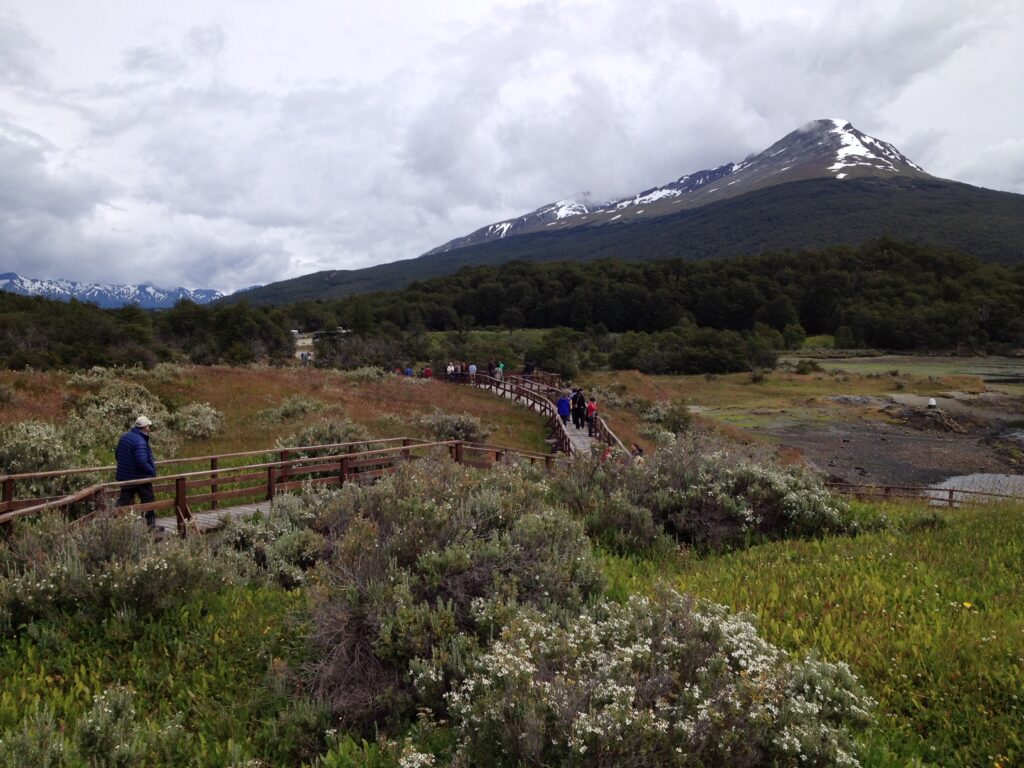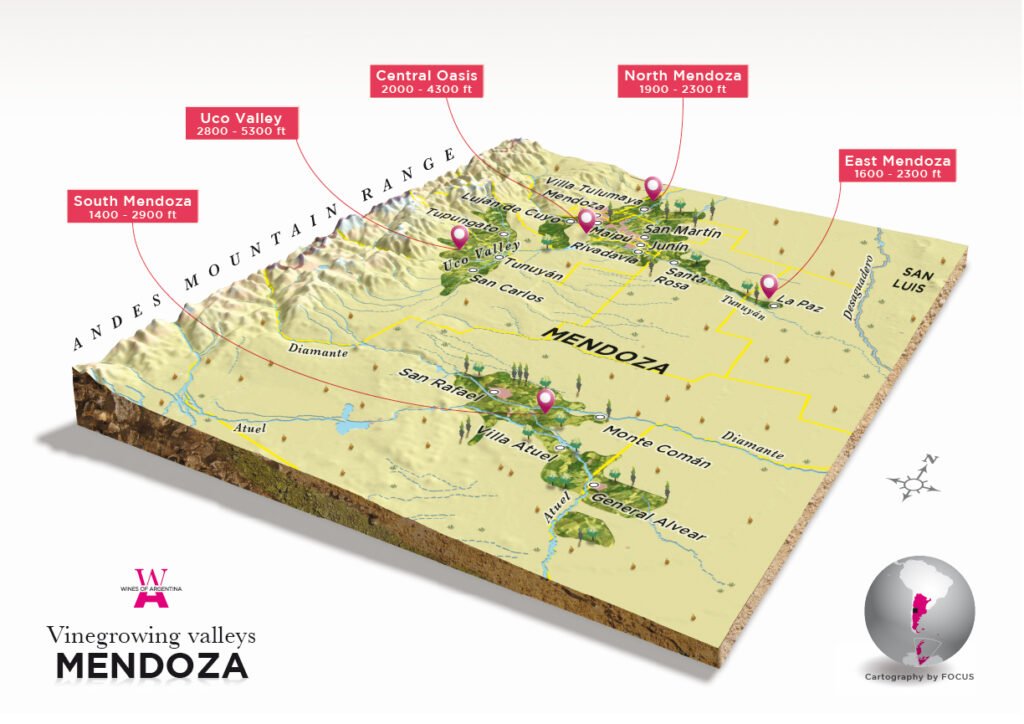
It was the best of wines, it was the worst of wines . . .
That's a bit of an exaggeration, but our paraphrase of Charles Dickens' famous line captures the spirit of the two Argentinian Cabernet Sauvignons that we tasted this week. We were in the mood to try a moderately priced Cabernet Sauvignon from a region that would have different characteristics from those of California and Washington, and perhaps find a bargain in the process. So, we chose a $20 Susana Balbo Cab - "the best of wines" - and a $10 Domaine Bousquet Mendoza Cab that had been highly recommended by a retailer -- as it turned out, "the worst of wines."
A quick primer on Mendoza Province. This is the largest of Argentina's wine producing regions (it's about the size of Spain), and virtually all of the best Argentinian vineyards are located there. It's located due west of Bueno Aires, about 1,000 miles from the Atlantic Ocean, nestled against the Andes Mountains. As you can see from the graphic below, most of the vineyards are located at between 2,000 - 4,000 feet. This makes a difference - grapes grown at these altitudes adapt to the higher ultraviolet exposure by growing thicker skins and developing deeper pigmentation. The result is generally wines that are more intensely fruity than those produced at lower altitudes.
Most people think of Malbec when they think of Mendoza (more on that in a future blog), but some really nice great Cabernet Sauvignons are produced there. Although they're not quite as cheap as a couple of years ago, good values can be found.

Although we tasted two relatively inexpensive Cabs, there are also some excellent - and pricier - Malbecs and Cabs produced in Mendoza. If you're exploring, the two best Mendoza subregions (located in the "Central Oasis" region in the graphic above) are:
- Lujan de Cuyo. Some good producers from this area include Alto los Hormigas, Norton, Caténa Zapata and Luigi Bosca.
- Maipú. Some good producers include Zuccardi and Trapiche.
Our wine of the week is a 2014 Susana Balbo Signature Series Cabernet Sauvignon (about $21 retail). It's made from 95 percent Cabernet Sauvignon and five percent Merlot, all from a single vineyard ("Finco Brio") in Mendoza's Uco Valley. The wine was aged in oak for 13 months, and has a dark purple color. On the nose, it had nice notes of dark fruit, blackberry and coffee. On the palate: it was full-bodied, with spice and black fruit, mild tannins, and a medium-to-long pleasant finish. This wine is quite different from the typical California Cabernets - it has more prominent fruit and less overt "oakiness." Overall, it's a very good wine, and one that you'll want to have with a hearty beef dish.
- The 2018 Domaine Bousquet was made from 100 percent organic Cabernet Sauvignon grapes, also from the Uco Valley. This is a simple, medium-bodied wine with somewhat unpleasant, dark fruit notes and a short finish. There's really nothing interesting about this wine - its primary attribute is that it won’t tempt you to over-imbibe. In fairness, this $10 wine was, well, a $10 wine. But compared to the Balbo, or even a comparably priced California Cabernet such as the Rodney Strong Sonoma Cabernet, it fared poorly.
Cheers!
